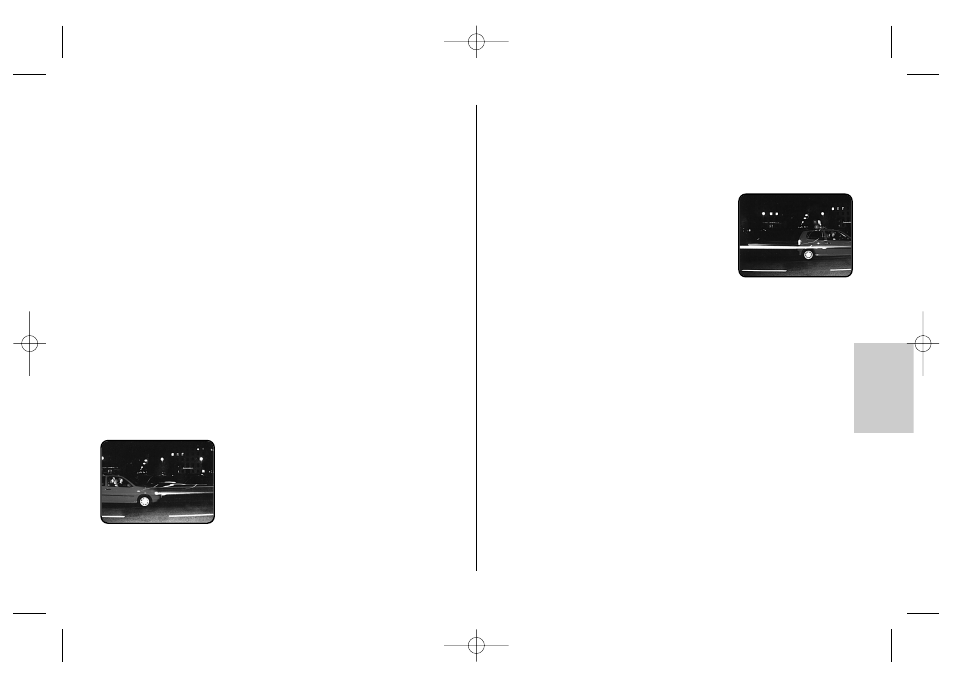Metz MECABLITZ 50 AF-1 digital Pentax User Manual
Page 107

107
ķ
11 Flash synchronisation
11.1 Automatic flash sync speed control
Depending on the camera model and camera mode, the shutter speed is swit-
ched to flash sync speed when flash readiness is reached (see the camera’s ope-
rating instructions).
Shutter speeds cannot be set faster than the flash sync speed, or they are swit-
ched automatically to the flash sync speed. Various cameras have a sync speed
range, for example from 1/60 sec to 1/250 sec (see the camera’s operating
instructions). The sync speed set by the camera depends on the camera mode,
the ambient light, and the focal length of the lens used.
Shutter speeds slower than the flash sync speed can be set according to the
camera mode and the selected flash synchronisation (see 11.3 and 11.4).
If a camera with a between-the-lens shutter and high-speed synchronisa-
tion (see 7.3) is used, flash sync speed is not controlled automatically.
As a result, the flash can be used at all shutter speeds. If you need the
full light output of the flash unit, you should not select a shutter speed
that is any faster than 1/125 sec.
11.2 Normal synchronisation
In normal synchronisation the flash unit is triggered at the beginning of the shut-
ter time (first curtain synchronisation). Normal synchronisation is the standard
mode on all cameras. It is suitable for most flash shots.
The camera, depending on the mode being used, is
switched to the flash sync speed. Speeds between
1/30 sec. and 1/125 sec. are customary (see the
camera’s operating instructions). No settings are
necessary on the flash unit, nor is there any display
for this mode.
☞
11.3 Second curtain synchronisation (REAR)
Some cameras offer the option of second-curtain synchronisation (REAR), in
which the flash unit is not triggered until the end of the exposure time. This is
particularly advantageous when used with lower shutter speeds (slower than
1/30 sec.) and moving subjects that have their own source of light. With
second-curtain synchronisation, a moving light source
will trail a light streak instead of building one up ahe-
ad itself, as it does when the flash is synchronised with
the first shutter curtain. In this way a „more natural“
image of the photographic
situation is produced!
Setting procedure see chapter 9.8.
11.4 Slow synchronisation (SLOW)
A slow exposure (SLOW) gives added prominence to the image background at
lower ambient light levels. This is achieved by adjusting the shutter speed to the
ambient light. Accordingly, shutter speeds that are slower than the flash sync
speed (e.g., shutter speeds up to 30 sec.) are automatically adjusted by the
camera. Slow synchronisation is activated automatically on some camera
models in connection with certain camera programs (e.g., a night shot pro-
gram, etc.), or it can be set on the camera (see the camera’s operating instruc-
tions). No settings are necessary on the flash unit, nor is there any display for
this mode.
Slow synchronisation SLOW is set on the camera (see camera’s operating
instructions)! Use a tripod when shooting with slow shutter speeds to
avoid blurred images!
☞
709 47 0191.A3 50AF-1 Pen. 17.12.2010 13:22 Uhr Seite 107